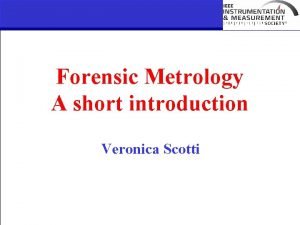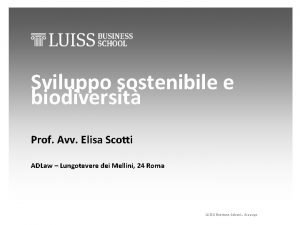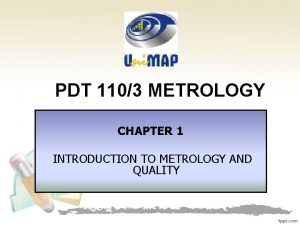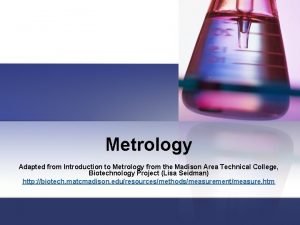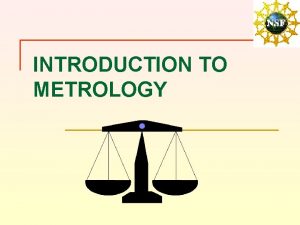Forensic Metrology A short introduction Veronica Scotti Forensic






- Slides: 6

Forensic Metrology A short introduction Veronica Scotti

Forensic science • Forensic science is the application of scientific principles and technological practices to the purpose of justice in the study and resolution of criminal, civil and regulatory issues – Bylaws, American Academy of Forensic Sciences • When scientific testimony is offered, the proponent must prove the testimony is produced by valid, scientific techniques and that the process or system produced an accurate result – Imwinkelried, Exculpatory Evidence, sect. 6 -4, Michie Co. , 1990 • Both definitions outline that up-to-date scientific principles and technological practices must be referred to, to produce an accurate result

Forensic metrology • Test and measurements have become more and more used tools in forensic sciences • Metrology is the science of measurements • The basic principles of metrology and its best practice cannot be neglected when scientific testimony is offered, based on the result of tests and measurements • Forensic metrology is that branch of forensic sciences that deals with the correct way of performing measurements and presenting their results • This video tutorial will explain the main principles of forensic metrology and why it helps justice to ascertain the factual truth

The pillars of metrology • Metrology lies on three main pillars: – Uncertainty – Calibration – Traceability • Measurement results will never provide the true value of the measurand • When measurements are performed considering these three pillars in a correct way, the measurement result is given as an interval of possible values into which the value that could reasonably be attributed to the measurand is expected to lie with a given probability. – It can be obtained from uncertainty • This probability is related to the probability that the measurand value lies outside the provided interval • Probability of wrong decision

How metrology helps justice • Measurement results provided absent uncertainty keep an important element hidden to the trier of facts: the probability of wrong decision – Decisions cannot be taken beyond any reasonable doubt, because the existence of doubts is not revealed to the trier of facts • Measurement results provided together with uncertainty quantify the doubt about the correctness of the results • The trier of facts can now decide, according to his or her conscience, whether the doubt is reasonable or not • Complete information is provided

Examples • A couple of examples are given where uncertainty was not evaluated or provided, and wrong decisions could have been taken. • The Liverpool bartender case • The Perugia murder

